Free Shipping on Orders over $75 to the Contiguous US
Free Shipping on Orders over $75 to the Contiguous US
Building Trellis for Indeterminate Tomatoes
April 03, 2024 5 min read 0 Comments
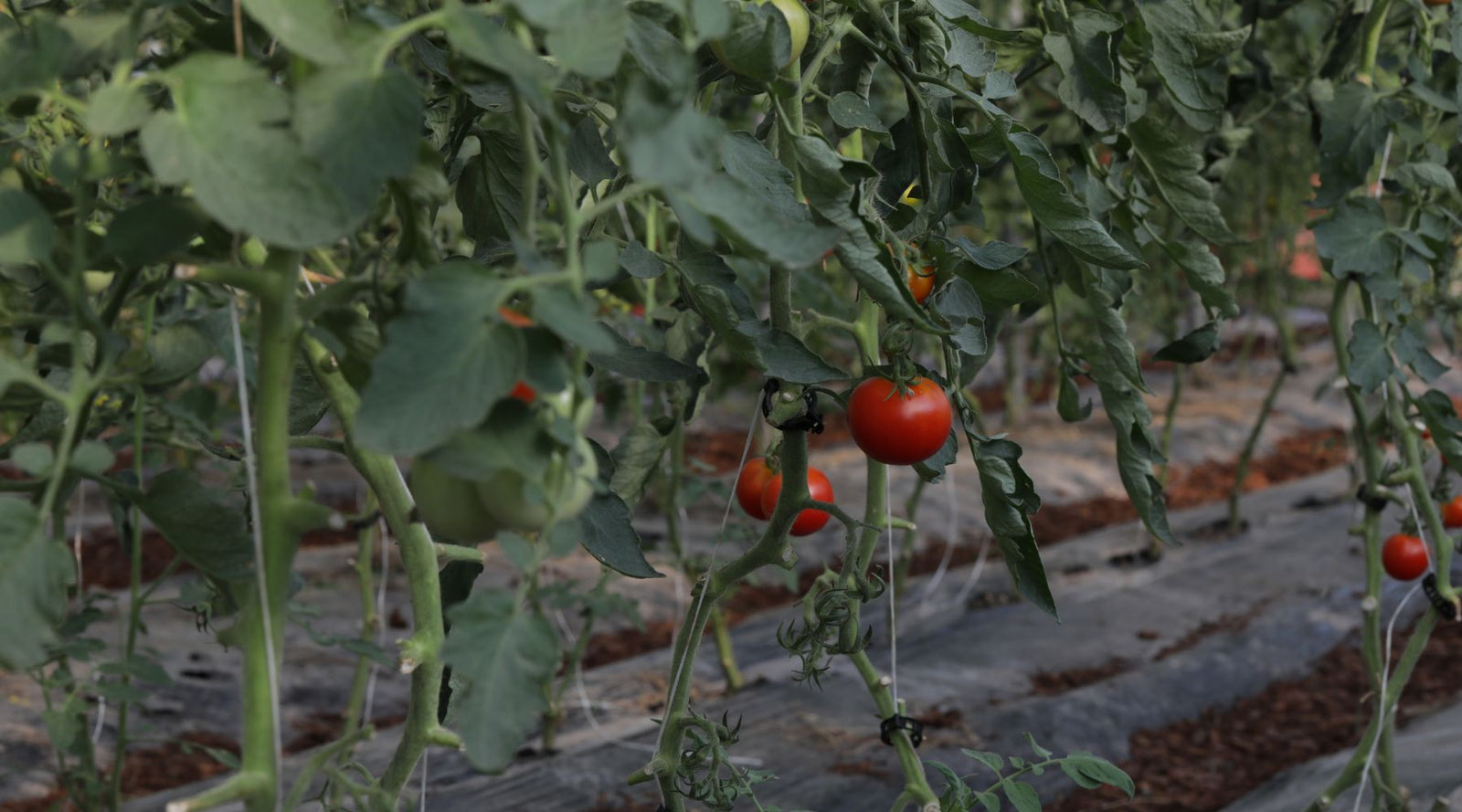
In this article we cover selecting the proper wire cable diameter based on the number of plants you will be growing and show our best practices for anchoring cables to your hoop house.
Trellising indeterminate tomatoes allows vines to grow vertically which aids in cooling the vine and healthy fruit sets. It also allows the farmer to efficiently maintain and harvest crops for a full growing season while keeping the house’s pest and disease pressure to a minimum.
Overbuilding in this situation is ideal. The last thing you want is to go with a slightly cheaper option and come in one morning to find a whole row of tomatoes has fallen to the ground. In most cases we have offered a budget level and a conservative level for wire choices. If you can, go with the conservative estimate.
Determining the trellis wire cable diameter you need to support your tomato vines.
Depending on the size of your hoop house and the number of plant sites per row you are planning for you will need a different diameter of wire cable. In the formulas below we assume that you will be spacing your plants at 18” intervals within rows. These formulas also assume 10 pounds of weight per vine. If you will be using a different spacing within rows for your plants or will be growing a heavier crop you can adjust these two variables accordingly.
Below we have done the math for you on common hoop house lengths. If your house is a different size or you wish to adjust the above mentioned variables you can set up your own equation following this formula.
In all of our equations below we have assumed 6’ of end wall working room. This allows you 3’ on either end of the row to wrap the vines around and continue the racetrack. If you need more space for your own comfort or other factors inside your house you can adjust this amount.
Tomato vine weight and length formula:
Hoop House Length In feet - End Wall Working Room x 12” / 18” = # of plant sites
( # of plant sites @ 18” On Center) x 10 pounds = Total MINIMUM Weight to Support
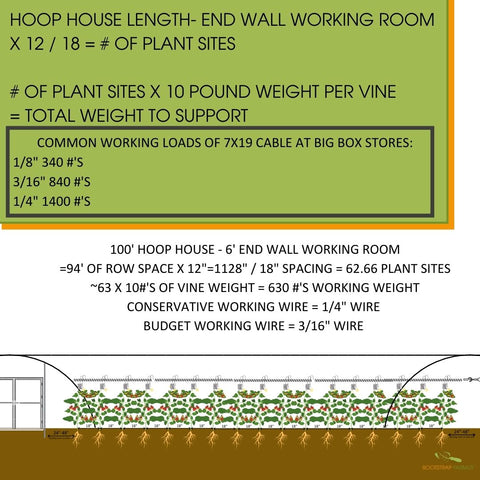
Trellis wire cable diameter recommended for common hoop house lengths.

20’ hoop house - 6’ end wall working room = 14’ of row space X 12” = 168” / 18” spacing = 9.33 plant sites ≅ 10 X 10 lbs. of vine weight = 100 lbs. working weight
Conservative working wire = 3/16”
Budget working wire = ⅛”
40’ hoop house - 6’ end wall working room = 34’ of row space X 12” = 408” / 18” spacing = 22.67 plant sites ≅ 23 X 10 lbs. of vine weight = 230 lbs. working weight
Conservative working wire = 3/16”
Budget working wire = ⅛”
60’ hoop house - 6’ end wall working room = 94’ of row space X 12” = 648” / 18” spacing = 36 plant sites ≅ 10 X 10 lbs. of vine weight = 360 lbs. working weight
Conservative working wire = ¼”
Budget working wire = 3/16”
80’ hoop house - 6’ end wall working room = 74’ of row space X 12” = 168” / 18” spacing = 49.33 plant sites ≅ 50 X 10 lbs. of vine weight = 500 lbs. working weight
Conservative working wire = ¼”
Budget working wire = 3/16”
100’ hoop house - 6’ end wall working room = 94’ of row space X 12” = 1128” / 18” spacing = 62.66 plant sites ≅ 63 X 10 lbs. of vine weight = 630 lbs. working weight
Conservative working wire = ¼”
What kind of wire cable should I use to build my tomato trellis?
For trellising vining crops like tomatoes, we recommend using 7/19 304 galvanized stainless steel cable. This is often referred to as aircraft cable. It is made up of seven strands of wire each composed of 19 individual strands. It is quite strong and corrosion resistant. Important as the hoop house can be a humid environment that leads non-galvanized metal to rust. The equations from the above section will determine which of the many available diameters of this cable you will need to support your growing vines.

Attaching vines to the trellis wire.
Nick from Bootstrap Farmer recommends using roller hook assemblies for attaching vines to the overhead wire cables. These hooks have a spool of UV resistant line that is clipped to the tomato vine using individual tomato clips. Squeezing the assembly allows you to pull out the desired amount of line as needed to lower the plants.

Framework for supporting trellis cables in the hoop house
The following framework can be used to build attachment points for each row of trellis wire. It is up to you to decide if your existing frame is strong enough to support the additional weight or if you may need to beef up your internal framework.
The construction that Nick has outlined is based on the All-metal Hoop House kits designed and sold by Bootstrap Farmer. These kits have four foot ground posts that are sunk two feet into the ground. They have been designed to provide enough pulling support to attach this kind of trellis system.
A 1” piece of square tubing is used as a horizontal support bar. This support bar will be attached as shown below. Your trellising cable is then attached to these using eye bolts and 6” turnbuckles with hooks. The black hexagons represent the attachment points where the square tubing is connected to the four end wall uprights. The smaller grey hexagons represent the anchor points for each row of trellis wire. Depending on the size of your hoop house you may need to place the horizontal bars higher or lower than pictured here. Because the tubing is attached to the inside of the uprights there will be over an inch of space between the plastic and all of the attachment hardware to protect against rubbing.
Working from the inside edge of your house the order for each row assembly will be: eye bolt nut (put a little lock tight on here), square tubing, eye bolt, turnbuckle with hooks, looped wire with clamp down anchor.
HOOP HOUSE END WALL VIEW

SIDE VIEW OF TRELLIS LINE

OVERHEAD VIEW OF TRELLIS LINE

Following these outlines and equations you will be able to build a strong trellis system that will last you for years if properly maintained. Build the best system you can afford and keep in mind that most of the expenses in installing this type of system will be one time costs. If you have questions please email us at contact@bootstrapfarmer.com. We are always happy to help you design a system that will work for you.
Adapting a tomato trellis for outdoor use
Using T-posts the methods outlined above can be used to adapt our trellising system for use with outdoor plants. In this situation the T-post will take the place of the square tubing. The posts will also provide a place to hang shade cloth should you need it in your area.
Watch the Video:
Up Next
In the next article we will go over possible issues you will run into in the processes of pruning, lowering and leaning. We will address what to do in the event that your plants have become overgrown. We will also discuss how to succession plant rows for continual harvests throughout your growing season.
Also in Growing Tomatoes
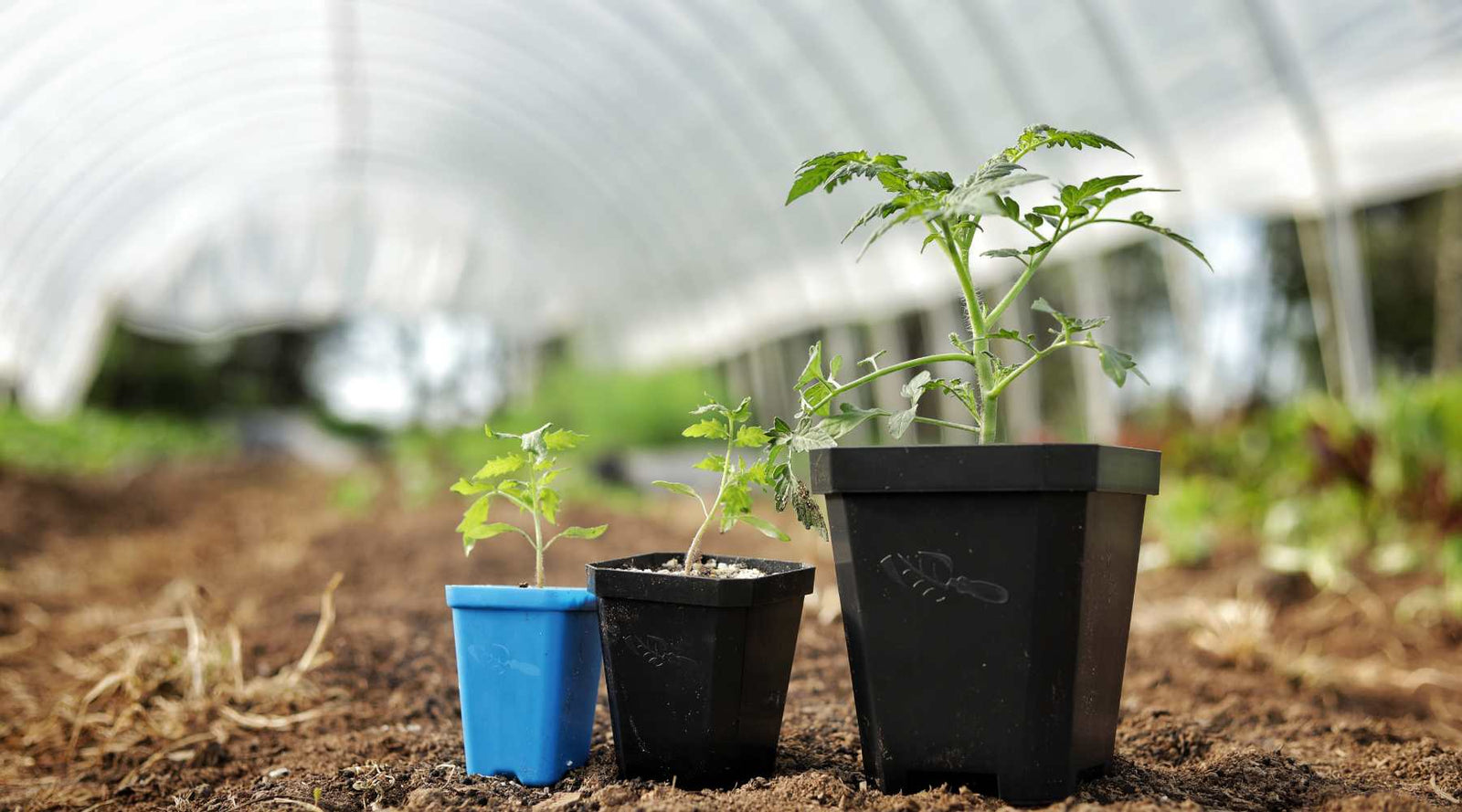
Growing Tomatoes for the Urban Farm
March 17, 2025 6 min read 0 Comments
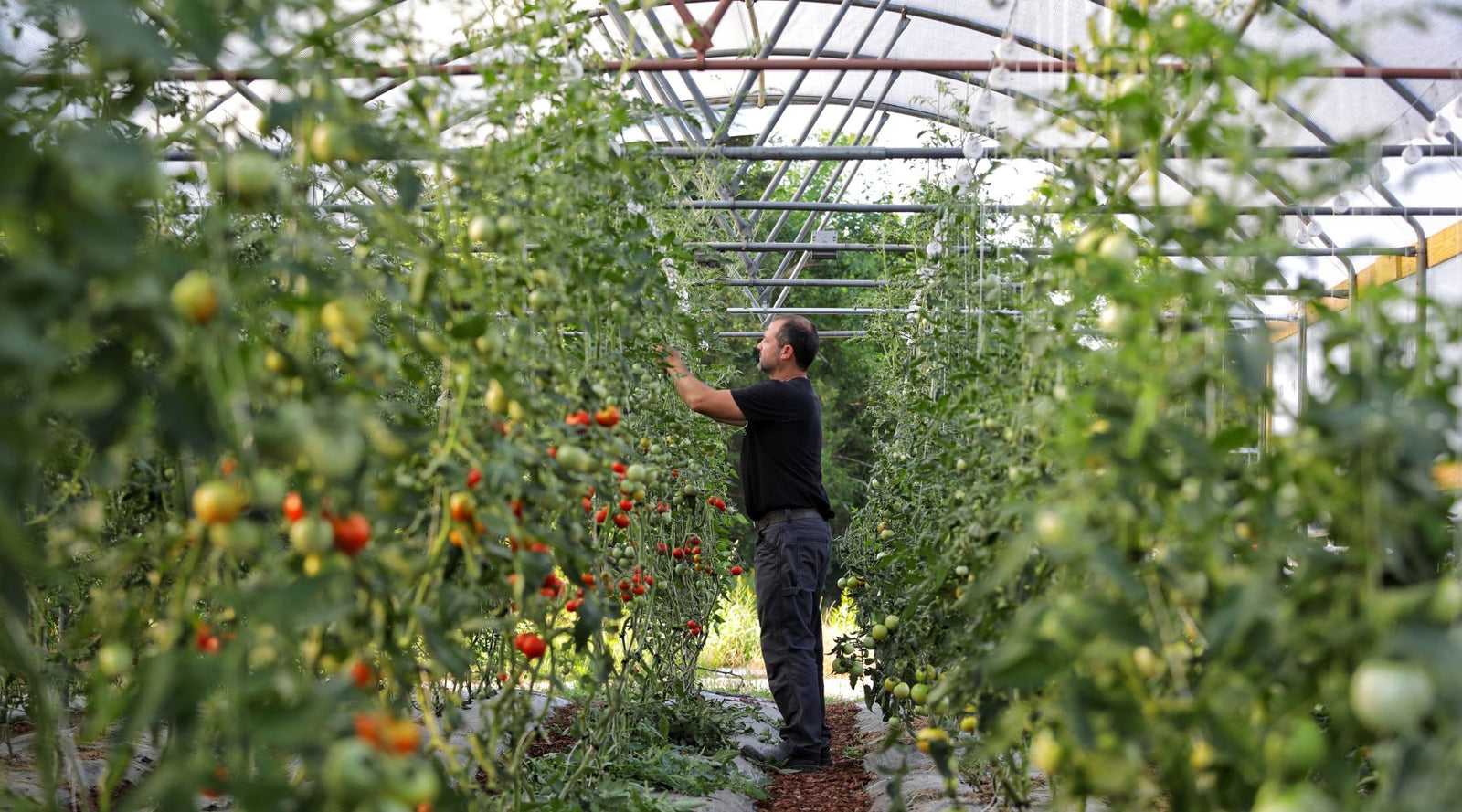
Managing Overgrown Tomatoes
April 03, 2024 10 min read 0 Comments
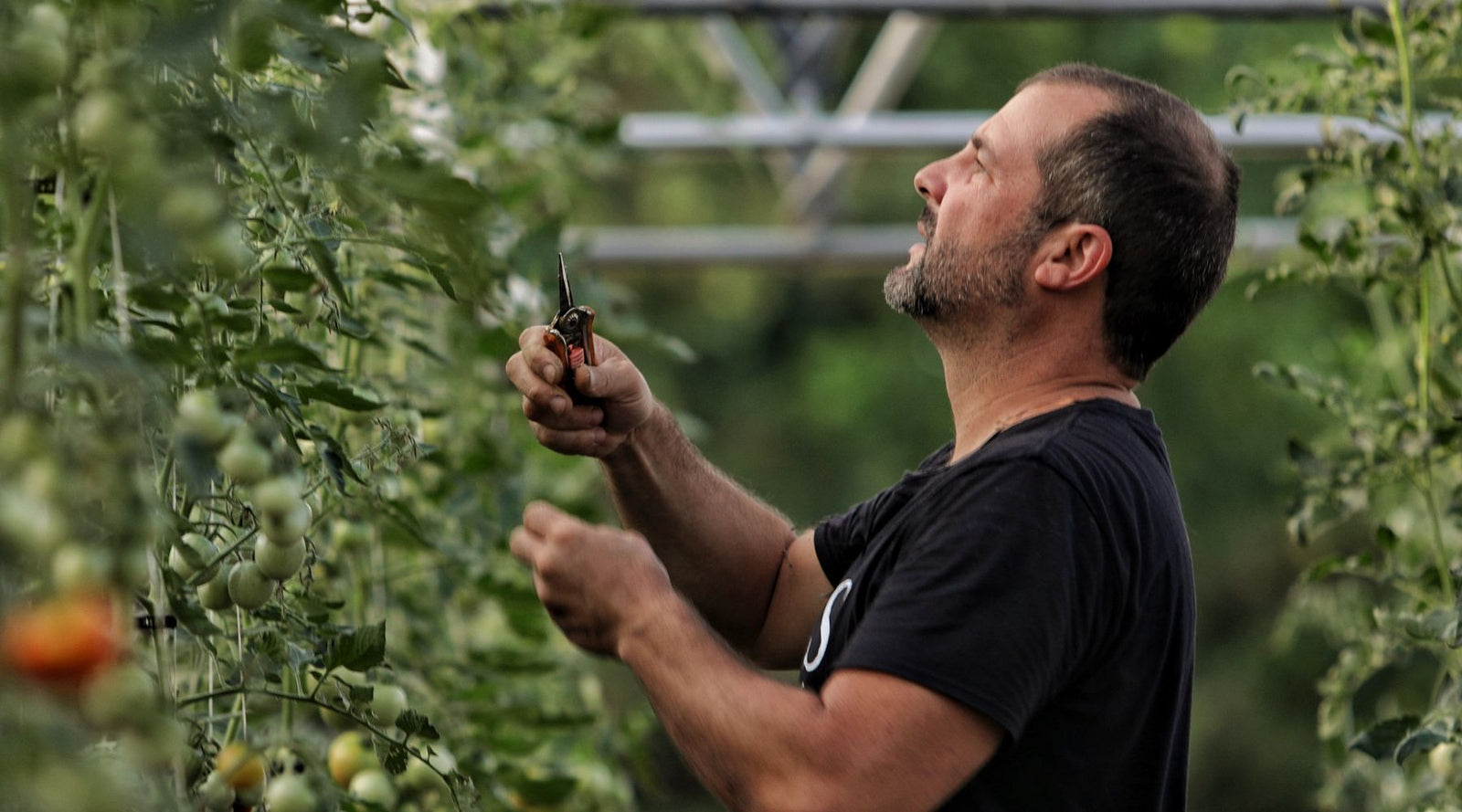
Pruning Indeterminate Tomatoes for Maximum Production in a Hoop House
April 03, 2024 5 min read 0 Comments
Recent Articles
- Growing Tomatoes for the Urban Farm
- Managing Overgrown Tomatoes
- Pruning Indeterminate Tomatoes for Maximum Production in a Hoop House
- Using the Lower and Lean Method for Indeterminate Tomatoes in a Hoop House
- Building Trellis for Indeterminate Tomatoes
- The Ultimate Indoor Tomato Seed Starting Guide for Gardeners
Subscribe
Sign up to get the latest on sales, new releases and more …
